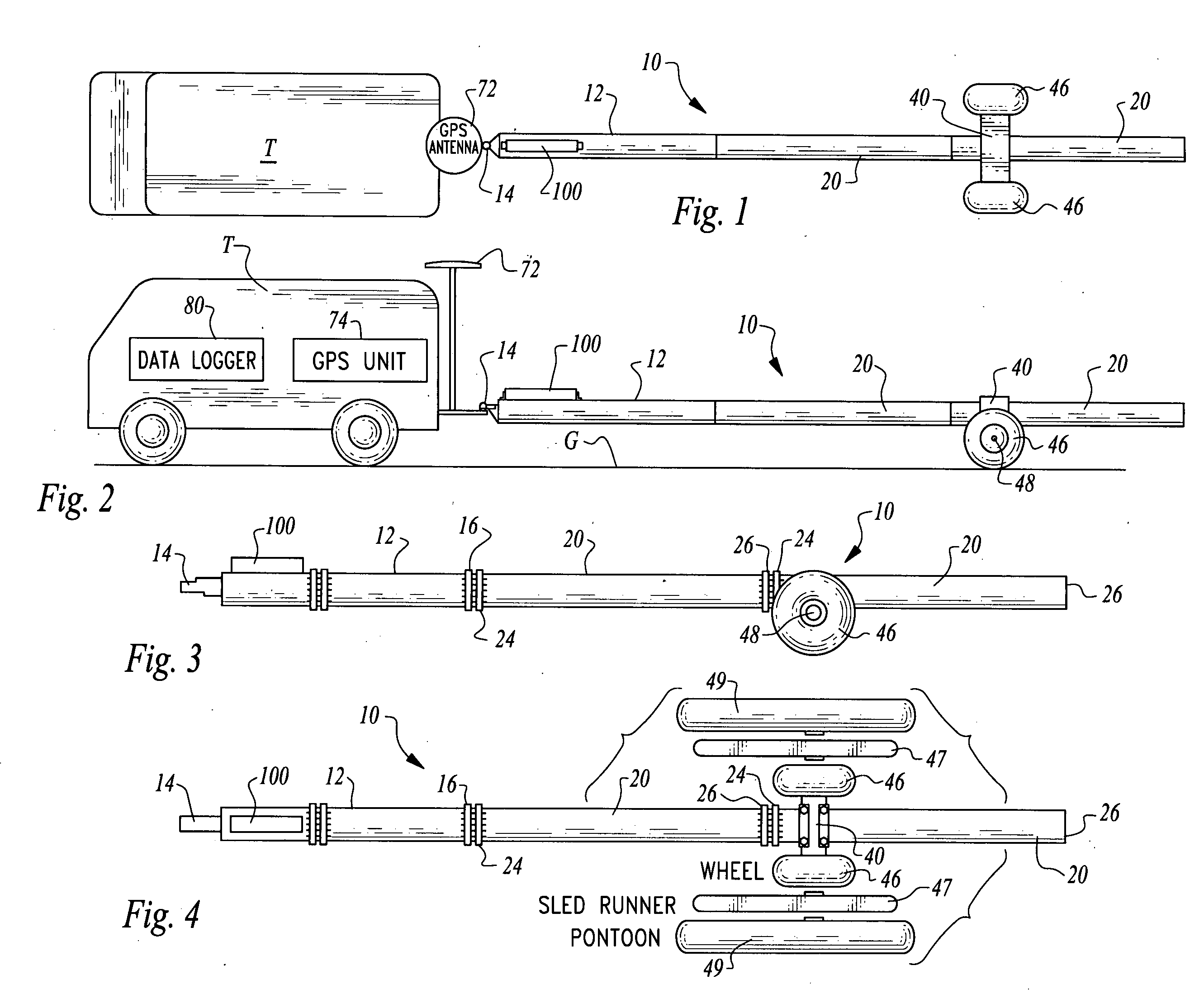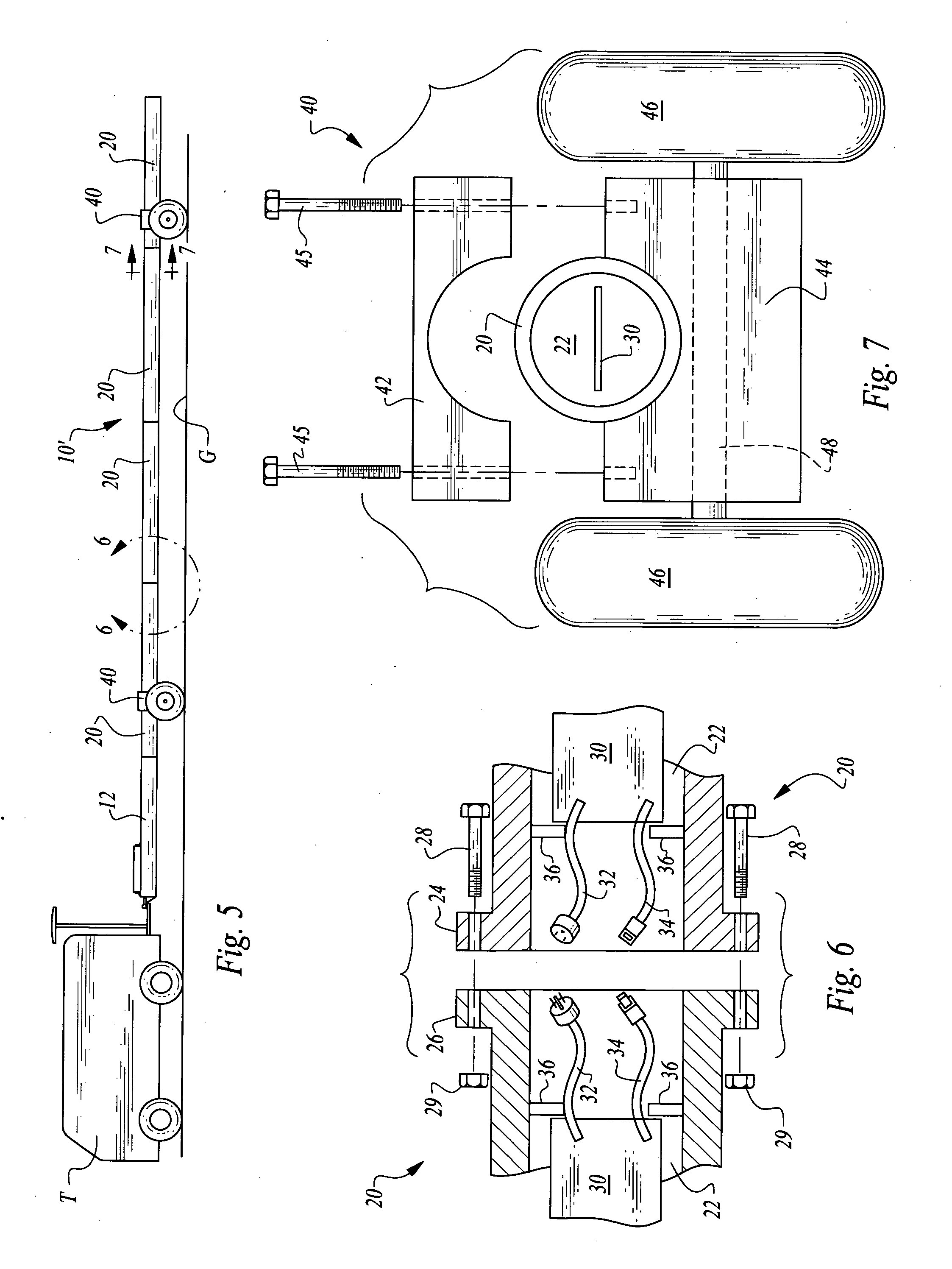Electromagnetic subterranean imaging instrument
a subterranean imaging and electromagnetic technology, applied in the field of electromagnetic subterranean imaging instruments, can solve the problems of low signal remaining for analysis, low dynamic range, and easy absorbing of high frequency signals, and achieve the effect of high dynamic rang
- Summary
- Abstract
- Description
- Claims
- Application Information
AI Technical Summary
Benefits of technology
Problems solved by technology
Method used
Image
Examples
first embodiment
[0091]The receiver assemblies 50 are preferably mounted upon the carriers 30 within one of the tube segments 20. The receiver assemblies 50 each include a receiver circuit 52 and at least one coil antenna defining a receiver coil 54. Three subembodiments are illustrated in FIGS. 11-16 for the receiver assemblies 50. In a first embodiment shown in FIGS. 11 and 12, the receiver assembly 50′ has a receiver circuit 52 coupled to a single receiver coil antenna 54 oriented about axis A perpendicular to a plane of the receiver circuit 52, which is typically provided on a printed circuit board and includes appropriate electronics mounted thereon for operation of the receiver circuit 52.
second embodiment
[0092]In a second embodiment, shown in FIGS. 13 and 14, the receiver assembly 50″ includes a receiver circuit 52 and a pair of coil antennas including a receiver coil antenna 54 oriented relative to axis A and a receiver coil antenna 56 oriented about axis B perpendicular to axis A and generally coplanar with a plane of the printed circuit board for the receiver circuit 52.
[0093]In a third embodiment (FIGS. 15 and 16) corresponding with the preferred embodiment of this invention (FIG. 8), the receiver assembly 50 includes a receiver circuit 52 and three coil antennas in the form of receiver coil antenna 54, receiver coil antenna 56 and receiver coil antenna 58, oriented about axis A, axis B and axis C, respectively. Each of these coil antennas 54, 56, 58 are oriented mutually perpendicular to each other in this embodiment of FIGS. 15 and 16.
[0094]For each of these embodiments for the receiver assemblies 50, a power line 32 and signal line 34 are coupled to the receiver circuit 52 an...
PUM
 Login to View More
Login to View More Abstract
Description
Claims
Application Information
 Login to View More
Login to View More - R&D
- Intellectual Property
- Life Sciences
- Materials
- Tech Scout
- Unparalleled Data Quality
- Higher Quality Content
- 60% Fewer Hallucinations
Browse by: Latest US Patents, China's latest patents, Technical Efficacy Thesaurus, Application Domain, Technology Topic, Popular Technical Reports.
© 2025 PatSnap. All rights reserved.Legal|Privacy policy|Modern Slavery Act Transparency Statement|Sitemap|About US| Contact US: help@patsnap.com



